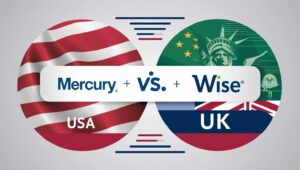Exploring the Benefits of AI for Creative Professionals
Artificial intelligence (AI) is rapidly becoming an integral part of the creative process for many professionals. AI can help creative professionals save time, increase efficiency, and create more innovative and impactful work. This article will explore the benefits of AI for creative professionals and how it can be used to enhance their work.
One of the primary benefits of AI for creative professionals is its ability to automate mundane tasks. AI can be used to automate tasks such as data entry, image processing, and content curation. This can free up time for creative professionals to focus on more creative tasks. AI can also be used to generate ideas and concepts, which can help creative professionals come up with new and innovative ideas.
AI can also be used to analyze data and provide insights that can help creative professionals make better decisions. AI can be used to analyze customer data to determine what types of content are most effective, or to analyze user behavior to determine what types of content are most engaging. This can help creative professionals create more effective and impactful work.
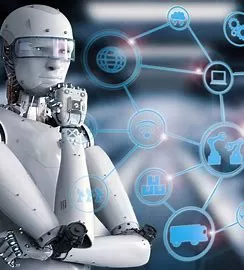
AI can also be used to create more personalized experiences for customers. AI can be used to analyze customer data and create personalized content that is tailored to the individual customer. This can help creative professionals create more engaging and effective content that resonates with customers.
Finally, AI can be used to automate the production process. AI can be used to automate tasks such as editing, color correction, and sound mixing. This can help creative professionals save time and increase efficiency.
In conclusion, AI can be a powerful tool for creative professionals. AI can help creative professionals save time, increase efficiency, and create more innovative and impactful work. AI can also be used to analyze data and provide insights that can help creative professionals make better decisions. Finally, AI can be used to automate the production process and create more personalized experiences for customers.
How AI is Revolutionizing the Creative Process
Artificial intelligence (AI) is revolutionizing the creative process, allowing for unprecedented levels of creativity and innovation. AI is being used to create art, music, and literature, as well as to develop new products and services. AI is also being used to automate mundane tasks, freeing up creative professionals to focus on more creative endeavors.
AI is being used to generate art, music, and literature. AI-generated art is created using algorithms that generate images based on input data. AI-generated music is created using algorithms that generate musical patterns and melodies. AI-generated literature is created using algorithms that generate stories and poems. AI-generated art, music, and literature can be used to create unique works of art, music, and literature that would not be possible without AI.
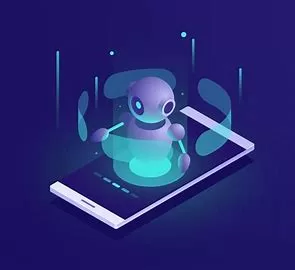
AI is also being used to develop new products and services. AI-powered algorithms can be used to analyze large amounts of data to identify patterns and trends. This data can then be used to develop new products and services that meet customer needs. AI can also be used to automate mundane tasks, such as data entry and customer service. This frees up creative professionals to focus on more creative endeavors.
AI is revolutionizing the creative process by allowing for unprecedented levels of creativity and innovation. AI-generated art, music, and literature can be used to create unique works of art, music, and literature. AI can also be used to develop new products and services and automate mundane tasks, freeing up creative professionals to focus on more creative endeavors. AI is transforming the creative process and allowing for unprecedented levels of creativity and innovation.
The Impact of AI on Graphic Designers and Visual Artists
The impact of artificial intelligence (AI) on graphic designers and visual artists is a topic of increasing interest in the creative industries. AI has the potential to revolutionize the way graphic designers and visual artists create and present their work.
AI can be used to automate mundane tasks, such as resizing images or creating color palettes, freeing up time for designers to focus on more creative aspects of their work. AI can also be used to generate new ideas and concepts, allowing designers to explore a wider range of possibilities. AI can also be used to create more realistic and detailed visuals, such as 3D models and animations.
AI can also be used to analyze user data and create personalized designs. This can be used to create more effective marketing campaigns and to tailor designs to specific audiences. AI can also be used to create interactive experiences, such as virtual reality and augmented reality.
AI can also be used to automate the production process, allowing designers to quickly and easily produce high-quality work. This can help designers to meet tight deadlines and reduce costs.
Overall, AI has the potential to revolutionize the way graphic designers and visual artists create and present their work. It can help to automate mundane tasks, generate new ideas, create more realistic visuals, analyze user data, and automate the production process. AI can help designers to create more effective designs and to meet tight deadlines.
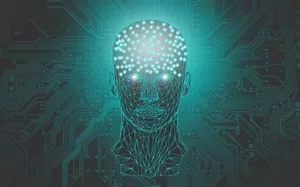
The Role of AI in Music Production and Composition
Artificial Intelligence (AI) is increasingly being used in the music production and composition process. AI is being used to create new sounds, generate musical ideas, and even compose entire pieces of music. This technology has the potential to revolutionize the way music is created and experienced.
AI can be used to generate new sounds and musical ideas. By analyzing existing music, AI can identify patterns and create new sounds and musical ideas that are similar to existing music. This can be used to create new sounds and musical ideas that are unique and creative. AI can also be used to generate entire pieces of music. By analyzing existing music, AI can generate entire pieces of music that are similar to existing music. This can be used to create entire pieces of music that are unique and creative.
AI can also be used to analyze existing music and identify patterns. By analyzing existing music, AI can identify patterns and create new sounds and musical ideas that are similar to existing music. This can be used to create new sounds and musical ideas that are unique and creative.
AI can also be used to create interactive music experiences. By analyzing existing music, AI can create interactive music experiences that are similar to existing music. This can be used to create interactive music experiences that are unique and creative.
AI can also be used to create music that is tailored to the listener. By analyzing the listener’s preferences, AI can create music that is tailored to the listener’s tastes. This can be used to create music that is unique and tailored to the listener’s preferences.
In conclusion, AI is increasingly being used in the music production and composition process. AI can be used to generate new sounds and musical ideas, generate entire pieces of music, analyze existing music and identify patterns, create interactive music experiences, and create music that is tailored to the listener. This technology has the potential to revolutionize the way music is created and experienced.
How AI is Transforming the Advertising and Marketing Industries
The advertising and marketing industries are undergoing a major transformation due to the emergence of artificial intelligence (AI). AI is revolutionizing the way businesses interact with their customers, allowing them to create more personalized and targeted campaigns. AI-driven technologies are enabling marketers to better understand customer behavior, optimize campaigns, and deliver more effective results.
AI is being used to automate many of the manual tasks associated with advertising and marketing. This includes tasks such as data collection, analysis, and segmentation. AI-driven technologies can quickly and accurately process large amounts of data, allowing marketers to gain valuable insights into customer behavior. This data can then be used to create more targeted campaigns that are tailored to the individual customer.
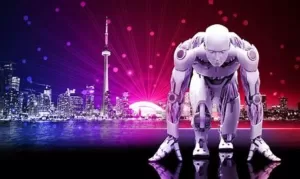
AI is also being used to optimize campaigns in real-time. AI-driven algorithms can analyze customer data and adjust campaigns accordingly. This allows marketers to quickly respond to changes in customer behavior and ensure that their campaigns are always delivering the best results.
AI is also being used to create more personalized experiences for customers. AI-driven technologies can analyze customer data and create personalized content that is tailored to the individual customer. This allows marketers to create more engaging campaigns that are more likely to resonate with customers.
Finally, AI is being used to automate the delivery of campaigns. AI-driven technologies can automate the delivery of campaigns across multiple channels, ensuring that campaigns are delivered to the right customers at the right time. This allows marketers to maximize the effectiveness of their campaigns and ensure that they are reaching the right customers.
Overall, AI is transforming the advertising and marketing industries in a number of ways. AI-driven technologies are enabling marketers to better understand customer behavior, optimize campaigns, and deliver more effective results. As AI continues to evolve, it is likely that the advertising and marketing industries will continue to benefit from its capabilities.



